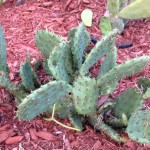Seeding Flowers/Vegetables Outdoors
- When/Where to seed:
- Cool-season vegetables (such as kale, leeks, lettuce, onions, peas, beets, carrots) can be planted prior to the last frost in the spring or in the summer. Warm-season vegetables (such as snap beans, squash, corn, cucumbers, melons) prefer to be planted after the last frost as they cannot tolerate cold weather. Be sure to plant warm-season vegetables after the late spring frost and before the first autumn frost.
- Be sure to not seed in soggy soil.
- Pay attention to the required sun exposure. Over-exposure can cause just as damage as under-exposure.
- Some vegetables and flowers can grow slowly from seed and can be given a head start indoors.
- Seeding:
- Preparation: Rake out debris and enrich the soil if needed with compost before seeding. Be sure to level any uneven areas prior to seeding if desired. Remove weeds.
- Method: Refer to the seed packet for information on planting depth.
- Maintenance: Water the seed gently after seeding to not move them and keep soil moist until the seed germinates.
- Tips:
- Plant vegetables in defined rows with popsicle sticks that indicate what is planted where.
- Pests can eat the seedlings. Look into netting and row covers to protect them.
- Provide trellises and supports if needed.

